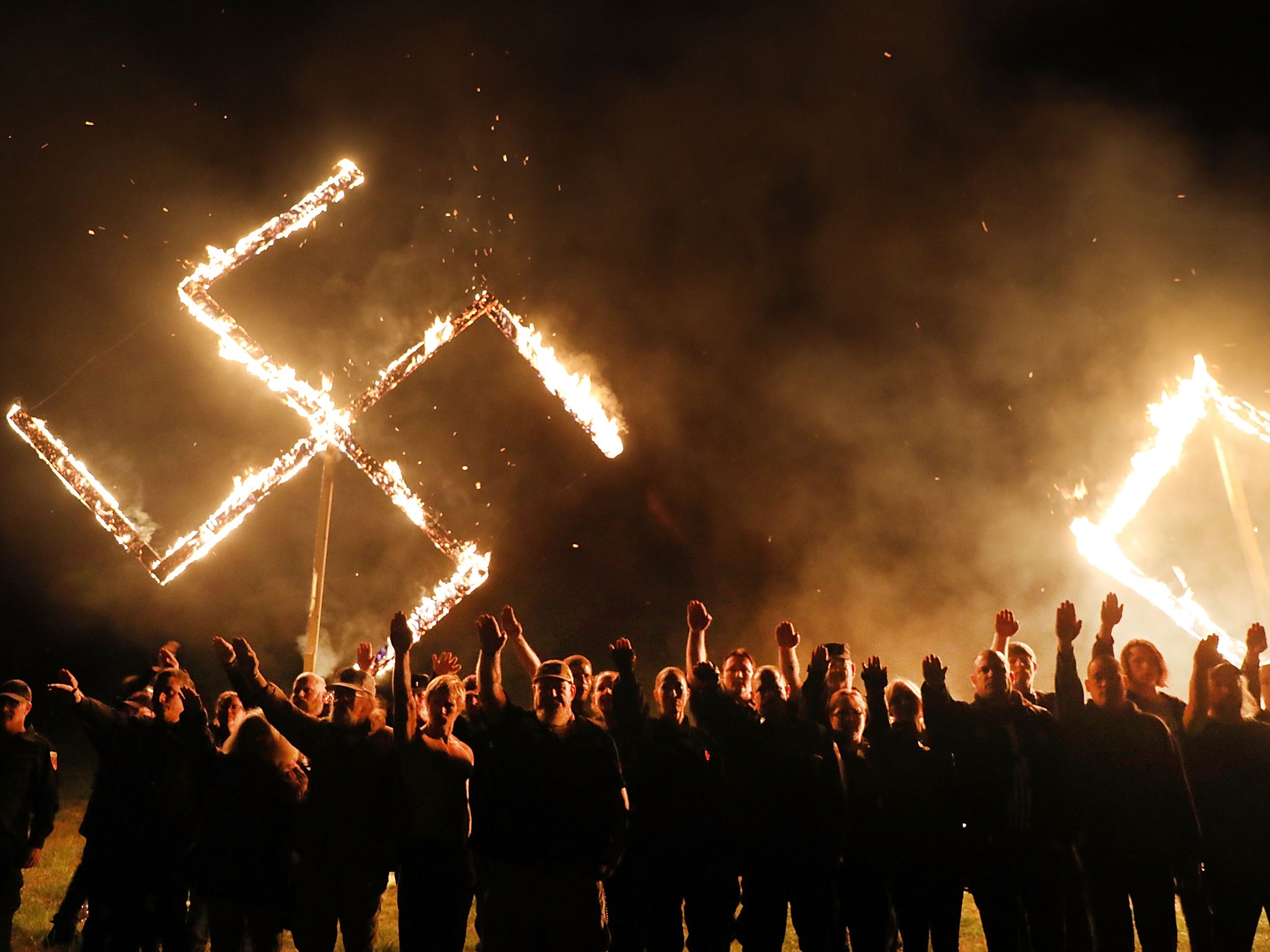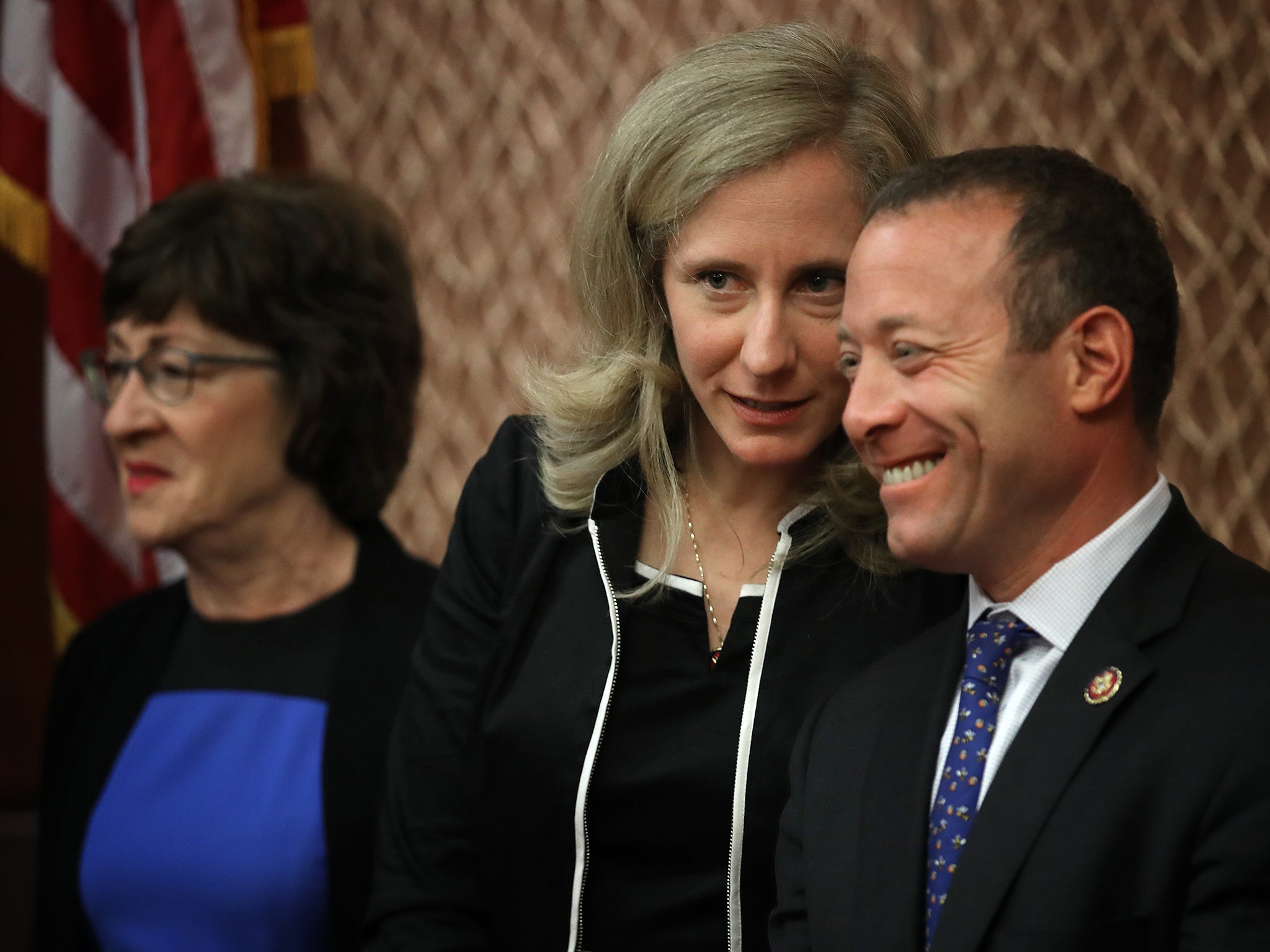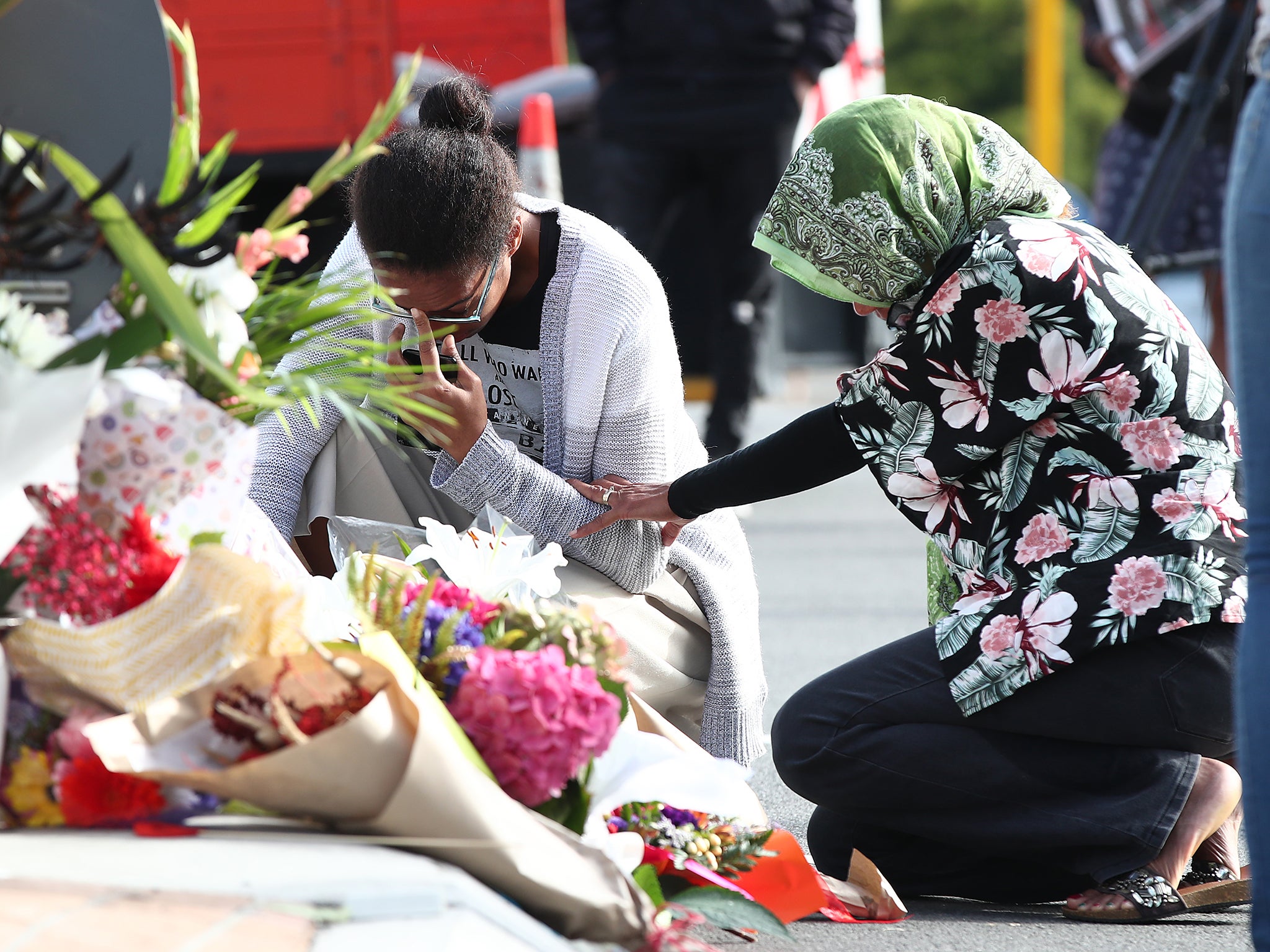Fears over rising far-right extremism in New Jersey after growing number of arrests
Unease comes after neo-Nazis caught stockpiling weapons and far-right propaganda

Your support helps us to tell the story
From reproductive rights to climate change to Big Tech, The Independent is on the ground when the story is developing. Whether it's investigating the financials of Elon Musk's pro-Trump PAC or producing our latest documentary, 'The A Word', which shines a light on the American women fighting for reproductive rights, we know how important it is to parse out the facts from the messaging.
At such a critical moment in US history, we need reporters on the ground. Your donation allows us to keep sending journalists to speak to both sides of the story.
The Independent is trusted by Americans across the entire political spectrum. And unlike many other quality news outlets, we choose not to lock Americans out of our reporting and analysis with paywalls. We believe quality journalism should be available to everyone, paid for by those who can afford it.
Your support makes all the difference.New Jersey investigators were looking into a routine complaint from a woman who said her ex-boyfriend was harassing her when they uncovered something far more dire: The 25-year-old man had stockpiled weapons and far-right propaganda and had talked about shooting up a hospital.
Two months later, New Jersey State Police responding to a crash in the same county discovered illegal assault weapons in the back seat of a van. Later, they found 17 more firearms, a grenade launcher and neo-Nazi paraphernalia in the driver’s home.
The arrests of the two men rocked law enforcement officials in Sussex County, raising fears that far-right extremism had crept into this sleepy, rural area in New Jersey.
It is impossible to know if the two arrests so close together are a fluke or signal of a growing white supremacist movement in the county, law enforcement officials said. The two men appear to have no connection to each other.
Sussex has lately been seeing ugly signs of increasing racism and antisemitism. Vandals have scrawled swastikas in schools, and in a highly publicised incident last fall, supporters of a Jewish congressman found their Sussex County home vandalized with antisemitic graffiti.
Bias-related crimes rose from four in 2016, when US president Donald Trump was elected, to seven in 2018, prosecutors said. Although the numbers are small, officials say the general upward trend is troubling in a county of only 141,000 people and reflects similar increases across the state.
“One hundred percent certainty, the numbers of reports have increased,” said New Jersey attorney general Gurbir Grewal. “I can’t say that belief system is isolated to Sussex. We’ve seen it in all parts of the state.”
At the same time, there has been a rise in right-wing extremism across the country. White supremacists and other far-right extremists have killed more people than any other category of domestic extremist in the past 18 years. In August, for example, a white supremacist targeting Mexicans killed 22 in a Walmart in El Paso, Texas.
Only recently have federal law enforcement officials come to grips with that threat, and local prosecutors like those in Sussex County have often found themselves doing investigations they are ill-equipped to undertake.
Law enforcement officials said neither of the men arrested in Suffolk County had contact with other white supremacists in the area. Instead, they appear to have been independently radicalised.
Gregory Mueller, an assistant prosecutor in Newton, New Jersey, said it is highly likely there are others with a similar ideology in Sussex County, but he is not sure how to find them. His investigators lack the expertise to ferret them out.
Until recently, for instance, Mueller and his team were not familiar with an image found on one suspect’s social media profiles: Pepe the Frog, a widely recognised, racist meme used by the far right.
For now, the county has just one computer forensics expert, Detective Marty Lewis, who spends nights and weekends trawling far-right internet forums for clues.
“City departments get so many resources from the feds to track these groups,” Mr Mueller said. “We have Marty down in the basement.”
Sussex as a case study
Tucked along New Jersey’s western border, Sussex County is rural and mostly white, although over the past five years there has been a small but steady increase in the number of immigrants living there. Mr Trump easily carried the county in 2016.
For roughly a century, the county was a conservative stronghold, the anchor of New Jersey’s reliably Republican 5th congressional district. But redistricting in 2010 added towns from the heavily Democratic eastern part of the state, and in 2016, the district elected a moderate Democrat, Josh Gottheimer, to congress.
He is the first Democrat to hold the seat since 1933. Not long after he was elected, his office was spray-painted with swastikas. The incident was part of a troubling rise in antisemitic, racist and far-right graffiti, county officials said.

The phenomenon tracked with what was happening across the country after the 2016 election in counties with similar demographics.
In the first two quarters of 2019, there was a 40 per cent increase in antisemitic incidents compared with the same period in 2016, according to statistics provided by the Anti-Defamation League.
“I think the national rhetoric is not helping,” said Jared Maples, the director of the New Jersey Office of Homeland Security. “That discourse leads to people feeling disenfranchised and on the fringe and again, empowered, maybe, to make their voices heard about the hate that they kind of espouse and believe in.”
Mr Gottheimer has been repeatedly targeted with graffiti – during the midterm election a supporter’s lawn sign was covered in Nazi symbols – but the most frequent targets have been the district’s schools: Swastikas have been found at schools in Glen Rock, Ridgewood, Emerson and the Pascack Valley.
Mr Gottheimer noted that other hate groups like the Oath Keepers and the Ku Klux Klan were gaining a foothold in his district. “The concern is those acts of hate are the embers and then they begin to get radicalised,” he said.

"They’re there. We just don’t know who they are."
Law enforcement officials said that Michael Zaremski, the 25-year-old arrested after his ex-girlfriend complained of harassment, appears to be a prime example of the self-radicalised threat they fear may cause damage in the future.
“They’re there,” said Mr Lewis, the computer forensics expert. “We just don’t know who they are.”
Zaremski was an emergency medical technician who frequented white supremacist forums online and had a trove of neo-Nazi literature. He was caught only because he sent a photo of his ex-girlfriend wearing parts of a Nazi uniform to her employer, officials said.
The police later discovered that he had made videos set in New Jersey that mimicked, shot-by-shot, the first minutes of the live-streamed massacre of Muslims by a right-wing terrorist in Christchurch, New Zealand. He had also stockpiled automatic weapons, each with the same markings on the gun magazines as those of the Christchurch shooter, according to sources familiar with the investigation.

Indeed, Zaremski was so obsessed with the mass shooting in New Zealand that he made his former girlfriend watch the video of the shooting repeatedly, investigators said. He also affixed a “Right Wing Death Squad” patch to his EMT jacket.
Law enforcement officials discovered material on his computer that suggested he was curious about committing a mass shooting at a hospital.
The way Zaremski became radicalised has become the new normal, law enforcement officials and experts on hate groups said. More and more alienated young people are adopting extreme ideologies in online forums and chat rooms, rather than joining traditional groups like the Ku Klux Klan.
“The online world is just as important to us as looking at real world activities,” said Heidi Beirich, the director of the Southern Poverty Law Center’s intelligence project, which tracks hate groups. “There’s essentially no distinction. And rooting people out from an online perspective is a very difficult thing for law enforcement, because you don’t have a group to infiltrate.”
An intelligence gap
Unlike Zaremski, Joseph Rubino, the 57-year-old man arrested after he crashed his van on a country road, appeared to have been on the radar of federal law enforcement for some time before he was taken into custody in August, one law enforcement official said.

A lapsed member of a motorcycle gang, Rubino was believed to be selling homemade semi-automatic guns and handing out far-right propaganda at gun shows in the region, officials said.
Still, Rubino was never arrested by federal agents.
Instead, he was picked up by the state police, who arrived at the scene of the crash in August and spotted banned firearms in the back seat of the wrecked van, according to court documents. A subsequent search of Rubino’s home turned up a grenade launcher, 17 semi-automatic weapons and racist and antisemitic materials.
Rubino was charged in federal court with possessing illegal weapons. Had he not wrecked his car, Mr Mueller said, Rubino might still be frequenting gun shows.
“If you look at how we were able to arrest Zaremski and Rubino, they were both by happenstance,” said Mr Mueller. “It’s not like we had this massive yearlong investigation and these were the two that we found.”
A wider problem
Sussex County’s quandary is a symptom of a bigger issue, years in the making: The FBI no longer has a deep reservoir of intelligence on far-right threats, current and former law enforcement officials say.
For years, there was a de facto policy within the Justice Department to defer prosecutions of far-right groups to state and local authorities, as the FBI shifted resources towards Islamic terrorism after the 9/11 attacks, said Michael German, a former FBI officer who worked undercover inside white supremacist groups in the 1990s and early 2000s.
It was not until recently, as the threat from right-wing extremism flourished and the threat from Islamic extremism waned, that the flaws in that strategy became clear. Deferring those cases to local authorities meant there was no longer a national repository of data and information on far-right groups, Mr German said.
“It means the federal government loses all that intelligence,” he said. “If there was a crime in Des Moines, Iowa, and a crime in Springfield, Illinois, and a crime in Minnesota, they might never know that those crimes are actually connected.”
Zaremski was engaging regularly with other far-right ideologues, Mueller said, but none of them appeared to be within Sussex County’s jurisdiction, or even the state’s. Pursuing such cases would require help from federal law enforcement.
“They do assist,” Mr Mueller said of the FBI and other agencies. “But it typically will take us reaching out to them on a case or person.”
Mr Grewal, the state attorney general, has revised bias and hate crime standards and is encouraging prosecutors to report any suspicious activity. Since that directive, the reports have increased by 300 per cent across the state.
“In the wake of Parkland, we saw that there were gaps in reporting,” he said, referring to the school shooting near Miami that left 17 dead.
But local law enforcement is still behind in infiltrating right-wing groups, Mr Grewal said. It is essential, he said, to “empower people who might come into contact with these individuals” to report them. It was a tip from a girlfriend, he noted, that led to Zaremski’s arrest.
“I definitely feel for these prosecutors,” Mr German said. “The lack of attention the FBI has put on this has created a deeper intelligence deficit where even the FBI doesn’t understand these groups anymore.”
The New York Times
Join our commenting forum
Join thought-provoking conversations, follow other Independent readers and see their replies
Comments